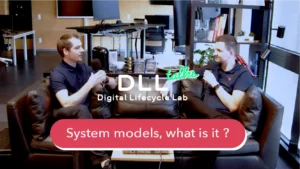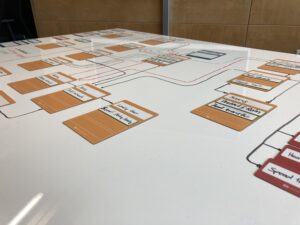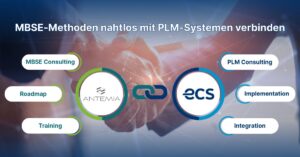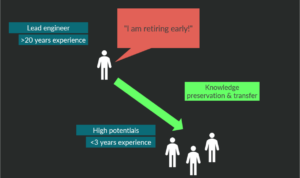In the development of complex technical systems, creating a system architecture is a crucial step. Architecture helps define and describe the system from multiple perspectives — structural, functional, behavioral — and acts as the foundation for subsequent development activities such as CAD design, electronics, or software engineering.
However, architecture is not something that emerges by chance. It must be deliberately created, aligned with stakeholders, evaluated, and iteratively refined. But how is a system architecture actually developed?
What is a system architecture?
A system architecture is more than a drawing or a set of boxes and arrows. It is a structured representation of a system’s components and interfaces, their relationships, functions, and behaviors. It defines:
How users interact with the system
- What the system is supposed to do (functions and use cases)
- How it’s built (structure, hardware/software components)
- How it behaves under different conditions (scenarios, states)
A good architecture brings clarity, enables alignment between stakeholders and the development team, manages complexity, ensures traceability, and much more. Without a clear architecture, complexity, inconsistency, expensive failures, and miscommunication are almost inevitable.
Common architecture development approaches
There are several ways to create an architecture — some better than others:
- Slide-based tools (e.g., PowerPoint): Simple, but unsuitable for complex systems due to lack of structure and reusability.
- Diagram tools (e.g., Visio, Draw.io): Easy to use and collaborative, but limited in formalism and data consistency.
- Paper/whiteboard: Great for creativity and team ideation, but poor in traceability and reusability.
- Formal modeling (e.g., SysML, ARCADIA): Precise, reusable, and machine-readable, but complex, expensive, and creativity-limiting in early phases.
Conclusion? In the early phase, rigid tools kill creativity. But pure creativity without structure fails to scale.
Bridging the gap: Modera by ANTEMIA
ANTEMIA closes this gap by enabling creative, collaborative, and structured early architecture development — directly on the whiteboard. Modera, our set of magnetic whiteboard cards, allows teams to visually model use cases, requirements, functions, test cases, and system components — without friction or formal constraints. They can be arranged, renamed, moved around — making team collaboration tangible and effective. The result: Better architectures, faster and more intuitive.

What makes it powerful?
- Teams build architecture together while standing, moving, and interacting physically
- Key system elements are modular and reusable
- The solution supports innovation and prepares for later digital modeling (e.g., detailing with SysML)
It’s like sketching before CAD — but with reusable building blocks that support scaling and collaboration.
Magnetic whiteboard cards:
- Use cases: Describe in which way a user is intended to interact with the system. This element can also be used as a state to describe the systems and transitions of a system
- Requirements: Describe what the system should do and fulfill
- Test cases: Describe how the system should be tested to meet the requirements
- Functions: Describe what the system should do or does
- Logical & physical systems/elements: Describe the structure and hierarchy of a system in an abstract/solution neutral (logical) or detailed/specified (physical) way. Can also be used as stakeholders or other entities.
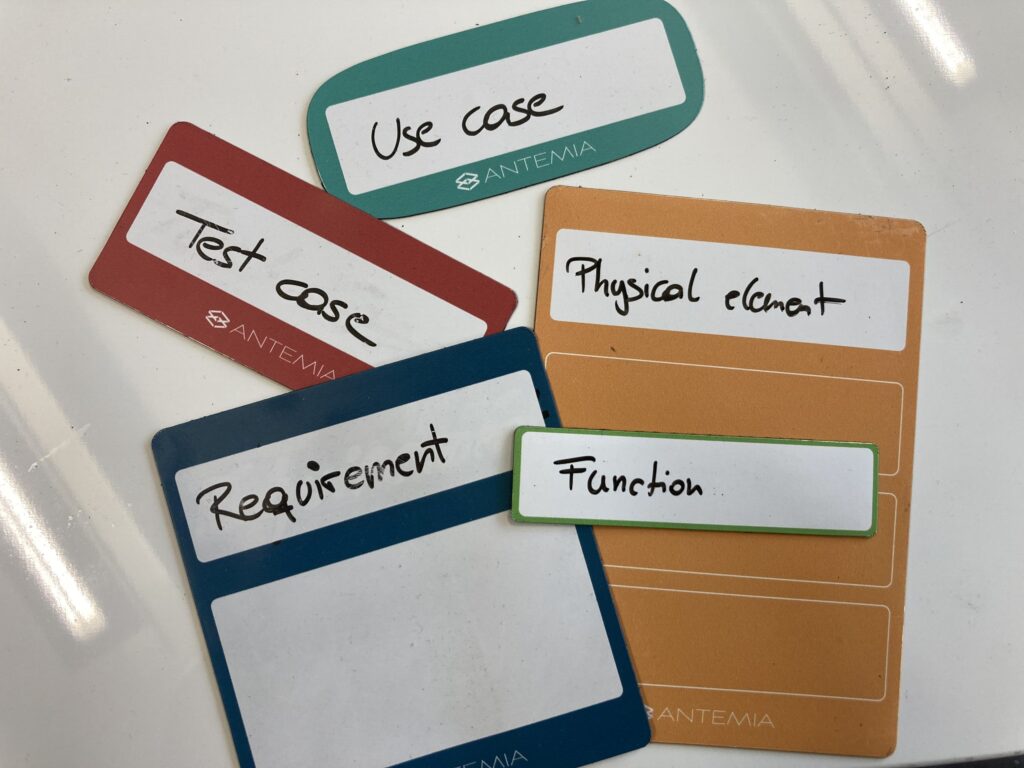
With these elements the first versions of a system architecture can be developed fast, effective, and give the developers space for creativity and innovation.
Key benefits of ANTEMIA’s solution
- Promotes collaborative creativity in early phases
- Reduces tool friction and cognitive overload
- Ensures a smooth transition to formal digital tools
- Supports rapid iteration and alignment
- Encourages a shared system understanding in cross-functional teams
- Provides a physical, reusable toolkit that grows with your process
Conclusion
Architecting complex systems must start with people — not with software. With ANTEMIA, engineering teams combine creativity and structure from the very beginning. Our approach enables better discussions, clearer thinking, and stronger designs. Start smart — build better.



